Type: Heavy Tank
Nation: United Kingdom
Period: World War 1
Location: Musée Royal de l’Armée, Bruxelles, Belgium
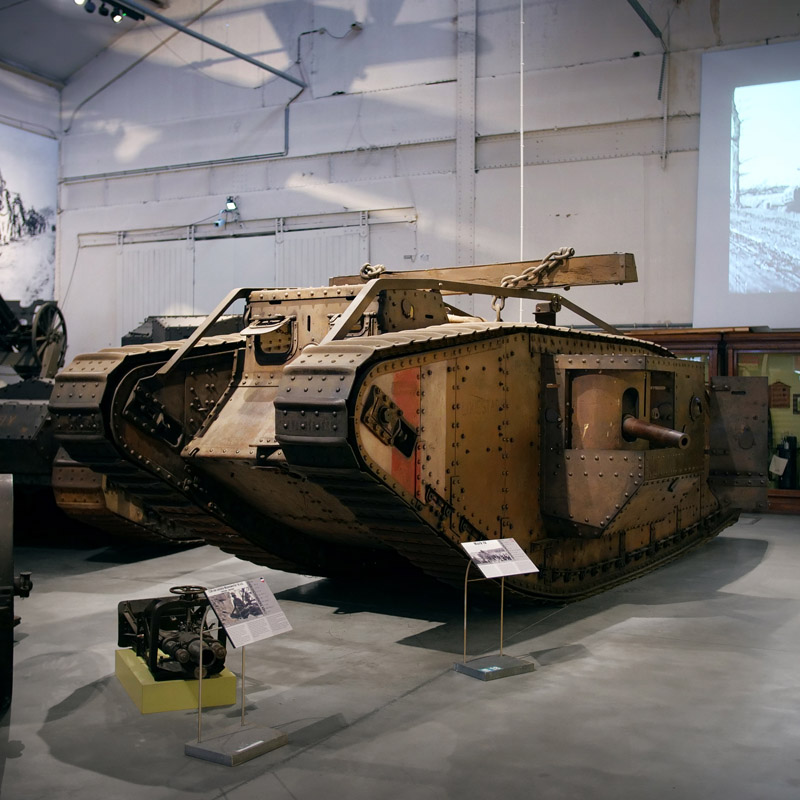
Overproduction
The Mark IV was the world’s first mass-produced tank. Although introduced in 1917, from a technical standpoint it was not much different from 1915’s “Mother” prototype: The machine still required four men just for driving. When General Douglas Haig had placed an order for 1,000 tanks in September 1916, engineer Walter Wilson had proposed a fundamentally re-designed steering system that could be operated by a single driver. But rather than waiting for this significant improvement to be ready, it was deemed more important to field the tanks as quickly as possible. Wilson’s sidelined innovation would eventually be implemented on the Mark V – after more than a whole year‘s delay. In total, around 1,200 Mark IVs were built: 400 males, 600 females and 200 supply tanks. The controversial decision to clog up all production facilities with a somewhat outdated tank for several months – instead of switching over to a more practical model as soon as possible – had been made primarily by Major Albert Stern, the head of the Mechanical Warfare Department, who was ultimately dismissed from this position in the summer of 1917.
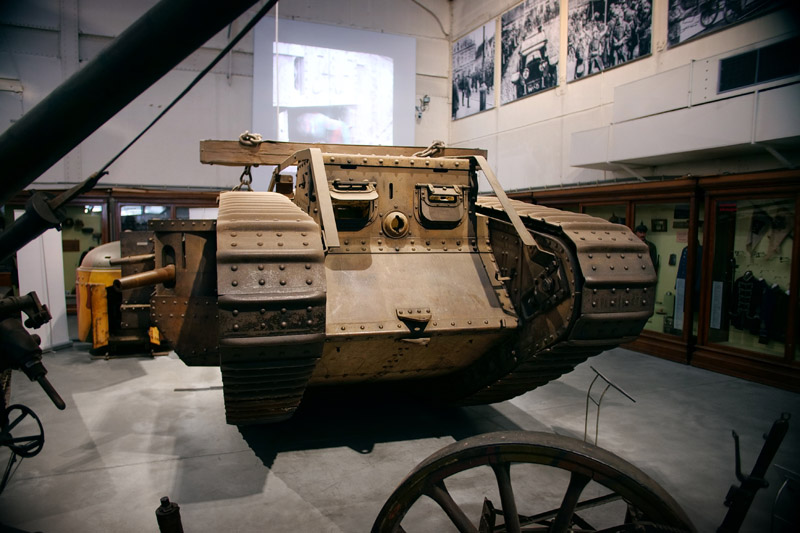
Occupational health and safety
One of the Mark IV’s most significant improvements was the Autovac fuel pump system. Thanks to this device the fuel tank could be relocated from the very front of the vehicle into an armoured box at the rear, where it was much less likely to be hit by incoming fire. Another welcome addition was the installation of an exhaust pipe on the roof, which directed most of the engine’s toxic fumes away from the eight-man crew. But still, conditions inside the tank were anything but comfortable. Only the driver and commander were provided with seats, while the other six men had to stand or crouch. As the 28-ton Mark IV lacked any sort of suspension, they would have to try to hold on as well as they could – luckily, the tank only had a top speed of about six kilometres per hour. Orders had to be given by hand signals or yelled directly into someone’s ear because the noisy engine was mounted openly in the middle of the crew compartment.

Ditching and unditching
Experiences with the horrendously muddy Western Front battlefields had made the British come up with a very useful wooden unditching beam that was carried on two distinctive roof rails running along the whole length of the Mark IV. If a tank got „ditched“, two crew members would have to volunteer to get out and chain the heavy oak beam to the tracks – while trying to avoid getting shot in the process. The tracks would then drag the unditching beam forwards and underneath the tank, where it would give the tracks something to bite on. After the tank had become unstuck, the beam could be stored back in position until it would be needed again at the next involuntary stop.
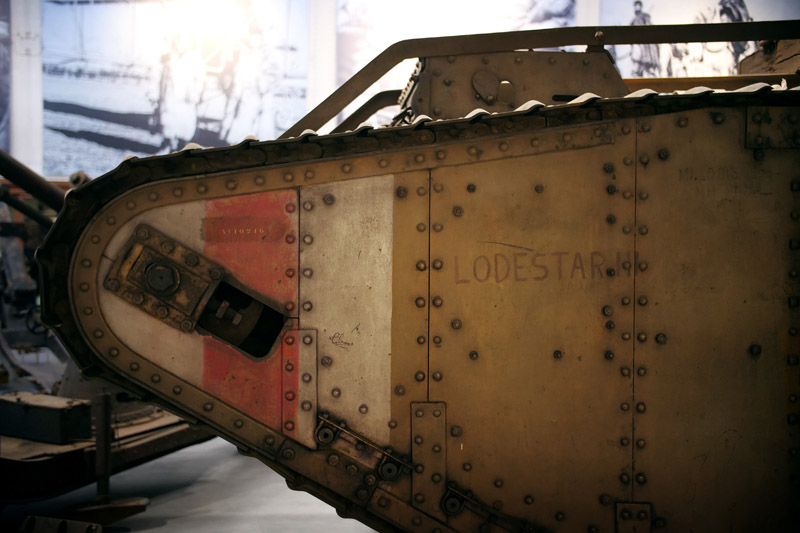
True colours
This particular vehicle was serving in France with 12th Battalion – one of only two units that kept operating Mark IVs until the end of the war. If an irreparably damaged tank got replaced, it was not uncommon for crews to re-use their old vehicle’s name for the new one and simply add a number. 4093 “Lodestar III” was brought to the Musée Royal de l‘Armée in the early 1920s. Interestingly, it has never been repainted in all this time – the khaki brown colour and markings are 100 percent original. By 1917 the British had stopped bothering to paint on camouflage schemes, since their tanks would be completely covered in mud anyway after having been driven around a couple of hundred metres. The white-red-white recognition stripes on the horns were added in 1918 to avoid friendly fire incidents, as the Germans had started to field a number of Mark IV „Beutepanzers“ which they had captured at Cambrai.
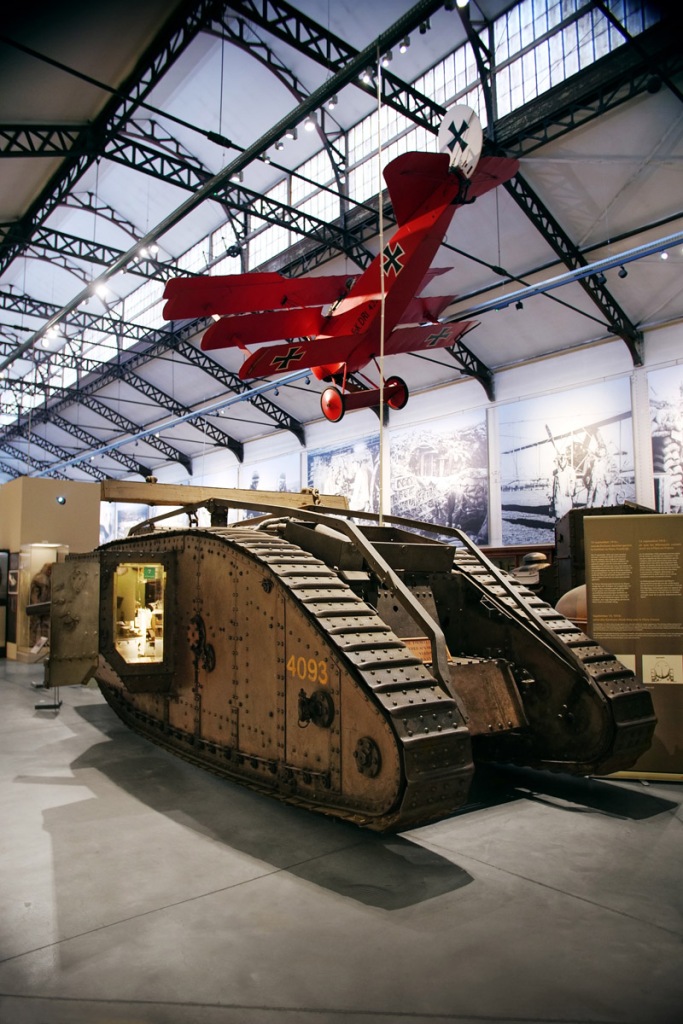
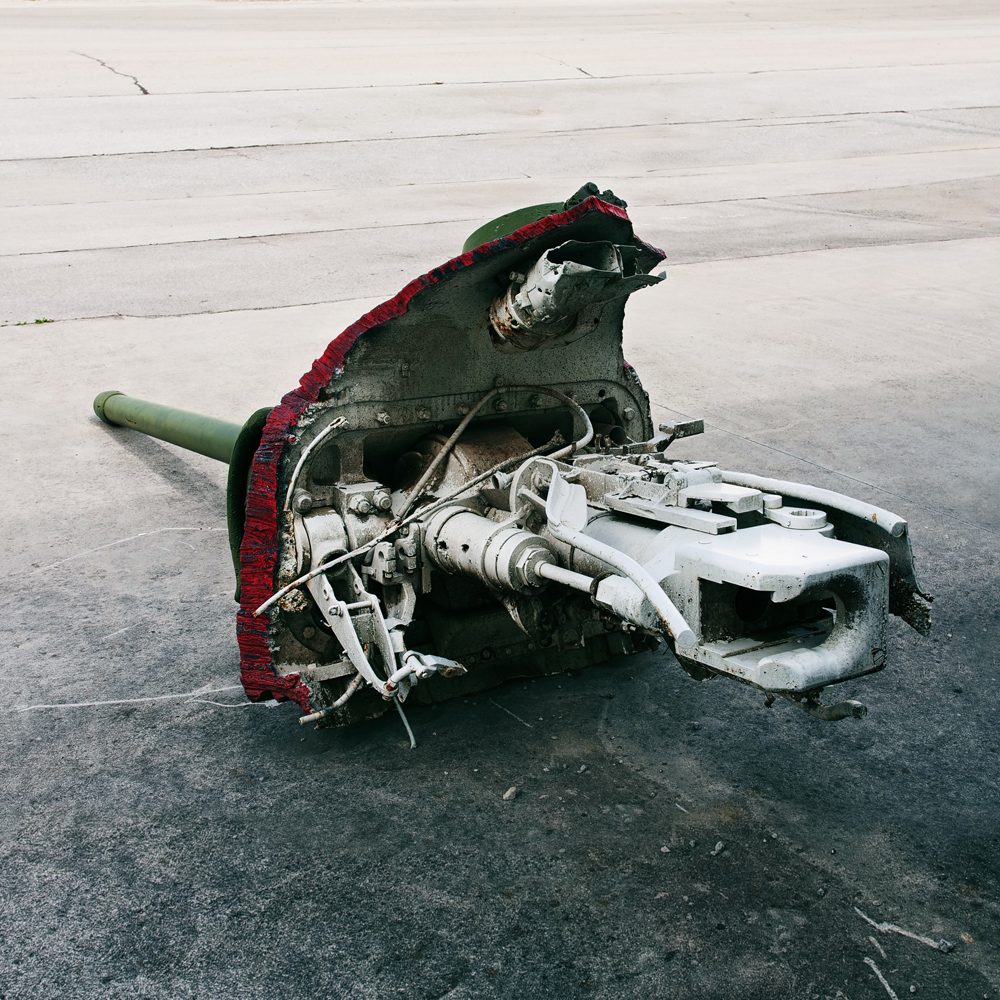
7 responses to “Mark IV (Male)”
[…] On 19 September 1916, only four days after the world had seen the first tank attack by a small amount of Mark Is, the British Commander-in-Chief in France Sir Douglas Haig placed an order for 1,000 more tanks. As the rapidly expanding number of crews would need proper training, it was agreed to first build 100 unarmoured vehicles made of mild steel – solely for this purpose. The first 50 of these interim tanks were called Mark II and the later 50 would be the Mark III. The 1,000 tanks intended for fighting would become known as the famous Mark IV. […]
LikeLike
[…] The Tank Museum in 1969, the original guns had been replaced by the shorter six-pounders from the Mark IV. To achieve the correct look, they were extended to the Mark I’s barrel length. „C19“ was […]
LikeLike
[…] over. Having learned about the wider trenches prior to the attack, the British had equipped their Mark IVs with fascines. These large bundles of wooden sticks would be dropped into the trenches to help the […]
LikeLike
[…] same old jigs as the Mark I with its wider cab. Furthermore, the small direct vision slits on the Mark IV are placed directly under the rivet band, while on previous models they are located right above the […]
LikeLike
[…] While the drivetrain of all previous models had been directly adopted from the crude Little Willie prototype and required four men for driving, the Mark V had new epicyclic gearboxes for each track which enabled the driver to operate the tank all by himself. As the commander no longer needed to assist in steering the vehicle, his position was moved from the front to the enlarged rectangular rear cab. From there he had a much better view of his surroundings, he could signal other tanks with the roof-mounted semaphore device and direct his own gunners via a set of cables linked to mechanical pointers in the sponsons – similar to the indicator system in the German A7V. The rear cab also allowed for the unditching beam to be deployed from a reasonably covered position. The Mark V had two dedicated machine gunners: One stationed at the rear and another one occupying the former commander‘s seat in the front cab. Since it was deemed that this machine gunner didn’t need as wide a field of view as the driver, the left vision port was made distinctively narrower – which is an easy way to tell a Mark V from a Mark IV. […]
LikeLike
[…] in history would take place only a month later. On 24 April three German A7Vs encountered a British Mark IV Male and two Mark IV Females near the town of Villers-Bretonneux. The female tanks – armed with […]
LikeLike
[…] its manufacturer FAMH was based. A formidable 400 units were built – compared to 1,200 British Mark IVs and only 20 German […]
LikeLike